CPAP Treatment Greensboro
Preventing Sleep Apnea from Disrupting Your Rest
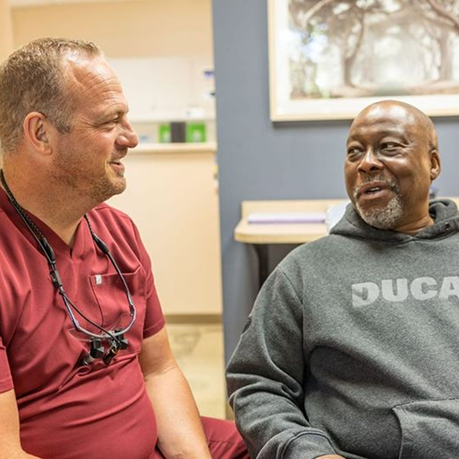
CPAP treatment is one of the most common solutions for addressing sleep apnea and its related symptoms, and if you’re familiar with these machines, you probably know just how effective they can be, as well as how much they’ve surged in popularity in recent years. In fact, patients who undergo CPAP therapy and comply with their treatment often see an incredibly noticeable improvement in all their symptoms. To learn more about how our team at SleepMed Solutions can help you conquer your sleep apnea with the assistance of CPAP treatment in Greensboro, call us today to set up your appointment.
Why Choose SleepMed Solutions for CPAP Treatment?
How Does CPAP Work?
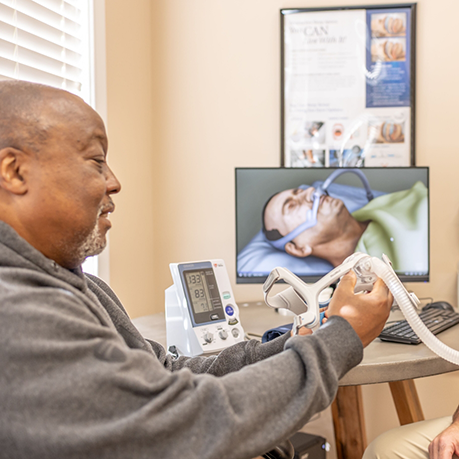
The secret to CPAP treatment is patient compliance; you should use your CPAP machine every time you sleep at home, while traveling, and even during naps. This way, you’re making the absolute most of your CPAP every time your head hits your pillow, and fully benefiting from restful sleep.
The device is surprisingly simple; a nasal mask is worn over the face as instructed, often covering both the mouth and nose, and the machine can simply be plugged into your wall. During the night, it sends air directly into your airway, ensuring that any obstructions aren’t preventing adequate airflow and that you aren’t constantly waking up gasping for air.
Keep in mind that you might have to make some adjustments at first, which can require both time and patience. You may need to consult with us to ensure that you’re using the correct pressure settings, and some patients also benefit from the use of a humidifier to prevent cold, dry air. Be sure that you’re cleaning your mask and tube daily and replacing them as needed, to ensure they remain both clean and functional.
Benefits of CPAP Treatment
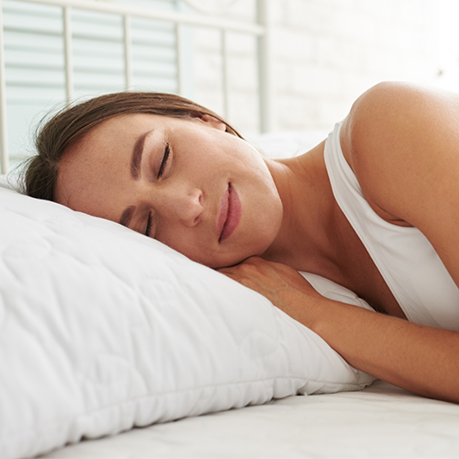
It goes without saying that seeking sleep apnea treatment will greatly benefit a patient, and CPAP treatment in particular offers all kinds of unique advantages in both the short- and long-run, including:
- Improved sleep quality, leading to you feeling better rested and less sleepy during the day.
- A noticeable reduction in snoring.
- Improved mood and demeanor and less irritability.
- Reduced risk of cardiovascular disease events, like heart attack and stroke.
- Helps to prevent or control high blood pressure.
-
Improved memory and thinking abilities (cognitive function).
Obstacles of CPAP Treatment
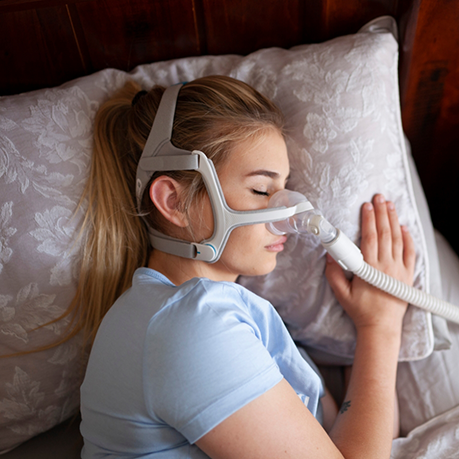
It’s important to be aware of the potential downsides of CPAP treatment, as minor as they may be. Just like how some patients can’t find effective relief with oral appliance therapy, others struggle to find relief while using a CPAP machine. A few potential downsides of CPAP treatment include:
- CPAP machines can sometimes be uncomfortable or claustrophobic for patients beginning treatment, and there might also be a small learning curve when using the device.
- Some patients experience congestion, runny nose, dry mouth, and minor nosebleeds, typically due to cold, dry air. The mask might also cause slight irritation if it doesn’t fit properly.
- Traveling with a CPAP machine can be cumbersome or inconvenient if you’re short on space or unsure about the power situation at your destination.
Learn More About Oral Appliance Treatment
Does Insurance Cover CPAP Treatment?
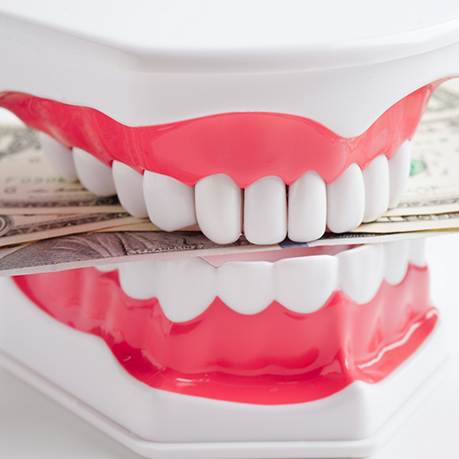
You’ll be happy to hear that CPAP treatment is often covered by medical insurance! Our office will make a referral to a CPAP medical device supplier that will work directly with your insurance and will let you know your expected out-of-pocket costs.
CPAP Treatment FAQs
How Do I Take Care of My CPAP Machine?
There are a few steps you can take to ensure that your CPAP machine remains in good condition:
- Remember to regularly change the filters at the machine’s air intake to prevent dust from building up on the internal parts.
- Make sure that the area around the machine remains clean and dust-free at all times.
- Double-check the air-intake area to ensure that it remains unblocked.
- Be aware of how often you need to replace the different components of the CPAP machine. For example, the mask cushion should be replaced monthly, but CPAP tubing generally only needs to be replaced every three months.
Our team will be more than happy to go into further detail about the proper steps for maintaining a CPAP machine. Please don’t hesitate to let us know if you have any questions about the best way to take care of your device.
How Do I Travel with a CPAP Machine?
When packing, you should make sure that extra CPAP supplies are included in your luggage so that you don’t have to worry about running out of them while you’re away from home. Such supplies may include mask cushions, headgear, and filters.
If you’re flying, you can bring your CPAP machine onto the plane with you as a carry-on item. That way, it will be less likely to be damaged by accident. Note that some airlines may have specific policies when it comes to CPAP machines, so it’s a good idea to call ahead of time to see if there are any special steps that you might need to follow.
Once you get to your destination, be sure to keep your CPAP machine safe; you don’t want it to break down or suffer serious damage away from home. It may be worth considering keeping it inside a protective travel case when you’re not using it.
How Will I Know If My CPAP Treatment is Working?
Your CPAP treatment is likely working if:
- You are feeling significantly less tired during the day.
- You don’t wake up as often during the night.
- Your loved ones have reported that your snoring has decreased.
- You have stopped getting headaches in the morning.
- You generally find it easier to focus and think clearly.
Note that having another sleep test performed can be a reliable way to evaluate whether your CPAP machine is doing an effective job of keeping your sleep apnea symptoms under control.
Are There Any Side Effects of CPAP Treatment?
Some patients experience a dry mouth as a result of using a CPAP machine. This is often due to the fact that high pressure in the mouth can end up blocking the flow of saliva. Fortunately, this problem can be addressed with the help of a humidifier.
